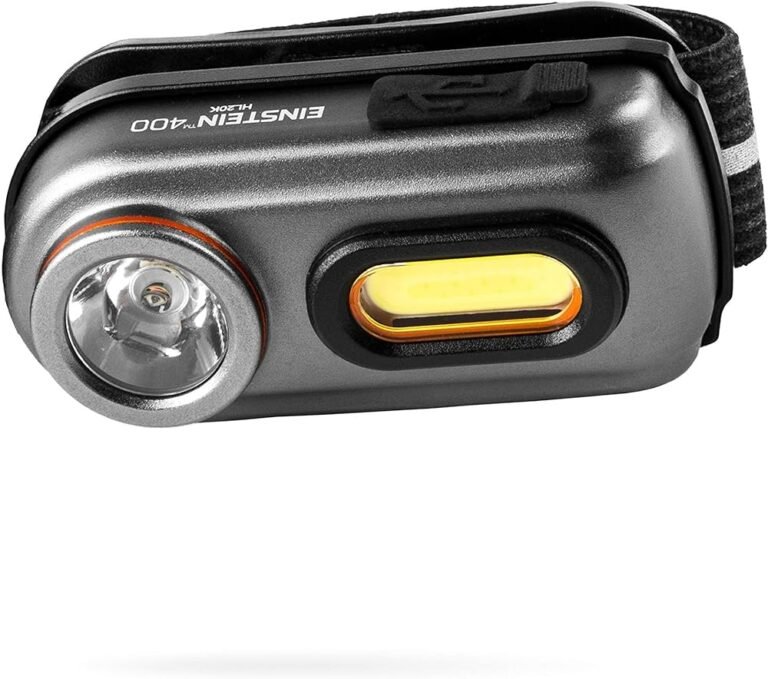Image Credit: ShutterStock
Fleas can be a persistent problem for dog owners, causing discomfort and potential health issues for their furry friends. Flea eggs on dogs are often overlooked but play a crucial role in the flea life cycle. Identifying and removing these tiny eggs is essential to break the cycle and prevent future infestations. Understanding how to spot and eliminate flea eggs can make a significant difference in keeping dogs healthy and comfortable.
This article will guide readers through the process of identifying and removing flea eggs on dogs. It will cover important aspects such as understanding the characteristics of flea eggs, effective methods for detection, and proven techniques for elimination. Additionally, the article will explore preventive measures, including the use of insect growth regulators and proper home and yard treatment, to keep fleas at bay. By following these steps, dog owners can help their pets stay flea-free and enjoy a happier, healthier life.
Understanding Flea Eggs and Flea Dirt on Dogs
What do flea eggs look like?
Flea eggs are tiny, measuring about 0.5mm in length and 0.3mm in width. They resemble miniature pearls or grains of salt, with an oval shape. Initially transparent and shiny, flea eggs turn opaque and pearly-white as they mature. Their smooth surface can appear collapsed or dimpled if exposed to insecticides. To identify flea eggs more easily, it helps to place them against a dark background or use a magnifying glass.
Where do fleas lay eggs?
Adult fleas lay eggs in the fur of their host animal after taking a blood meal. These eggs are not sticky, so they often fall off the pet within a few hours. Common areas to find flea eggs include under the dog’s stomach, around the ears, and near the tail. However, since the eggs drop off quickly, they can be found in various places where pets spend time, such as bedding, carpets, furniture, and even human beds.
Flea eggs vs. flea dirt
It’s essential to distinguish between flea eggs and flea dirt, as both indicate a flea infestation. While flea eggs resemble salt, flea dirt looks more like black pepper. Flea dirt is actually flea feces, consisting of digested blood and waste. To differentiate between the two, place the debris on a wet, light-colored towel. If it turns red or pink, it confirms the presence of flea dirt. Removing flea dirt is crucial, as it serves as food for newly-hatched flea larvae.
Identifying Flea Eggs on Dogs
Visual inspection techniques
Identifying flea eggs on dogs requires careful observation. These tiny, off-white ovals resemble grains of salt and can be difficult to spot, especially on light-colored fur. To begin the inspection, part the dog’s fur with fingers to expose the skin. Focus on warm, protected areas such as the armpits and groin, as these are favorite flea hangouts. It’s important to note that flea eggs are not sticky and often fall off the dog within hours of being laid. This means they may be found in the dog’s environment rather than on the animal itself.
Using a flea comb
A flea comb is an invaluable tool for detecting flea eggs and adult fleas. To use it effectively, work the comb through the dog’s hair, starting close to the skin. The fine teeth of the comb can capture adult fleas, which are about the size of a pencil lead and range in color from reddish-brown to black. After each pass, examine the comb for fleas, flea eggs, and flea dirt. Dip the comb into a bowl of warm, soapy water to clean it and dispose of any captured fleas. For overall pet health, consider supporting your dog’s well-being with supplements like animal creatine chews, which can help boost energy and muscle recovery, especially for active dogs.
Common areas to check
When searching for flea eggs, it’s crucial to examine areas where the dog spends significant time. Check the dog’s bedding thoroughly, as well as any furniture or carpets where the pet frequently rests. Flea eggs can also be found in cracks between wood floorboards and along baseboards. For a more thorough inspection, use a magnifying glass or a phone’s magnification feature to spot these tiny eggs more easily. Remember that adult fleas may also be present in these areas, so be vigilant in the search for both eggs and adult insects.
Removing Flea Eggs from Dogs
Bathing with flea shampoo
Bathing a dog with flea shampoo is an effective method to remove flea eggs. Any soap can kill fleas, larvae, and eggs, but specialized flea shampoos are designed for this purpose. When bathing, it’s crucial to wait at least 48 hours before and after applying flea treatment. For a quick kill, use Castile soap with coconut oil, which protects the skin from drying while eliminating fleas. Dawn dish soap in hot water can also be used to kill adult fleas, but this is not a long-term solution. After bathing, treat any areas of flea allergy dermatitis on the dog’s skin.
Combing techniques
Using a flea comb is essential for removing flea eggs from dogs. To effectively use a flea comb:
- Comb through the entire coat when the dog is dry.
- Pay special attention to the base of the tail, groin, and back of the neck.
- Occasionally brush in the opposite direction of the hair to catch fleeing fleas.
- For long-haired dogs, use a long-toothed flea comb.
- Dunk the comb in soapy water every few strokes to kill captured fleas and eggs.
- Repeat the combing process daily.
Flea Dirt on Dogs: Topical treatments
Topical flea treatments have been a popular solution for nearly 30 years. These treatments are applied directly to the dog’s skin, starting at the shoulder blades. The solution spreads throughout the coat via hair follicles and natural skin oils. Effective topical treatments both kill fleas and repel all flea life cycle stages. While these treatments can be very effective, they may take 12-48 hours to start killing fleas. It’s important to allow the medication to dry fully before allowing the dog near other pets or small children.
Preventing Future Flea Infestations
Regular grooming
Regular grooming plays a crucial role in preventing flea infestations. Brushing dogs daily with a flea comb helps remove adult fleas, eggs, and flea dirt. This process not only keeps the pet’s coat healthy but also allows for early detection of any potential flea problems. Bathing dogs with flea shampoo can be effective, but it’s important to wait at least 48 hours before and after applying other flea treatments. For a quick flea kill, Castile soap with coconut oil can be used, which also protects the skin from drying out. In addition to grooming, ensuring your dog has a healthy diet by purchasing high-quality dog food online can help improve its overall skin and coat health, further reducing the risk of flea infestations.
Environmental control
To prevent future infestations, it’s crucial to treat both the indoor and outdoor environments simultaneously with the pet. Vacuuming regularly, especially in areas where pets spend most of their time, helps remove flea eggs and larvae from carpets and furniture. Washing pet bedding in hot water (140°F or above) effectively kills fleas and their eggs. For outdoor areas, limiting access to sheltered spots that could support developing fleas is beneficial. Some pet owners may consider using yard treatments containing insect growth regulators (IGRs) like pyriproxyfen, which inhibit flea development.
Preventative medications
Veterinarian-prescribed preventative medications are highly effective in controlling fleas. These include monthly oral tablets, topical treatments, and flea collars. Products like Simparica Trio and Bravecto offer extended protection against fleas, ticks, and other parasites. It’s important to consult with a veterinarian to choose the most suitable preventative for each dog, as factors like age, breed, and health conditions can affect the choice of medication. Consistent use of these preventatives, as directed by the veterinarian, is key to maintaining long-term flea control and protecting both pets and homes from infestations.
Conclusion
Identifying and removing flea eggs on dogs is a crucial step to keep our furry friends healthy and comfortable. By understanding what these tiny eggs look like and where to find them, dog owners can take quick action to break the flea life cycle. Regular grooming, using flea combs, and applying effective treatments are key to tackling this pesky problem. What’s more, keeping the home environment clean plays a big role in preventing future infestations.
To wrap up, the fight against fleas doesn’t end with just treating the dog. It’s an ongoing process that involves careful observation, consistent care, and a clean living space. By following the steps outlined in this article, dog owners can help their pets stay flea-free and enjoy a happier, healthier life. Remember, a little effort goes a long way in protecting our four-legged companions from these troublesome parasites. Additionally, if you’re looking for extra care or supervision while you’re away, consider searching for a doggy daycare near me to ensure your dog receives the attention and comfort they need.
FAQs on Flea Dirt on Dogs
1. What is the best method to eliminate flea eggs from a dog?
To effectively remove flea eggs from your dog, start by washing them with an anti-flea shampoo. Afterward, use a comb to meticulously remove as many eggs and live fleas as possible. Follow up with a spot-on flea treatment and replace their flea collar with a new one to ensure ongoing protection.
2. How can you detect flea eggs on your dog?
To spot flea eggs on your dog, closely examine their fur and skin. Look for signs of flea activity such as tiny bugs moving or jumping in the fur, or small black specks known as “flea dirt,” which is actually flea feces. Using a flea comb on your dog’s fur can help you find and remove fleas or flea dirt.
3. What can instantly kill flea eggs?
Foggers are an effective solution for instantly killing flea eggs, along with other pests. However, for comprehensive control, it’s advisable to use foggers in conjunction with sprays or other treatments that can reach areas under furniture where foggers might not be effective.
4. How can you tell if flea eggs are dead?
Determining whether flea eggs are dead can be difficult without using a microscope or magnifying glass, as dead flea eggs often look similar to live ones. Both dead and live flea eggs can have a smooth, shiny surface and may appear translucent.
























Can you be more specific about the content of your article? After reading it, I still have some doubts. Hope you can help me.